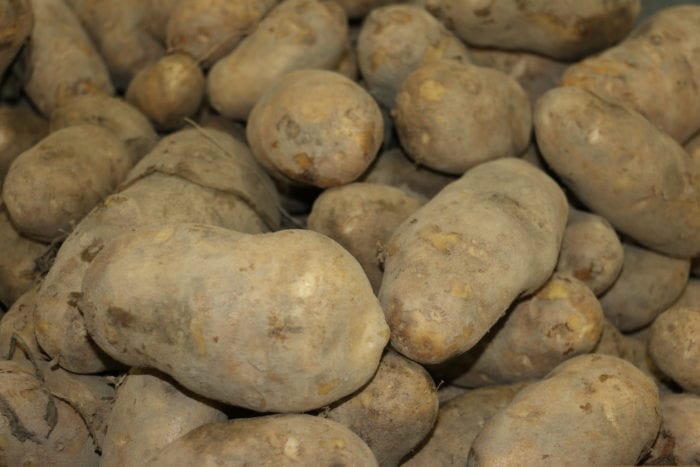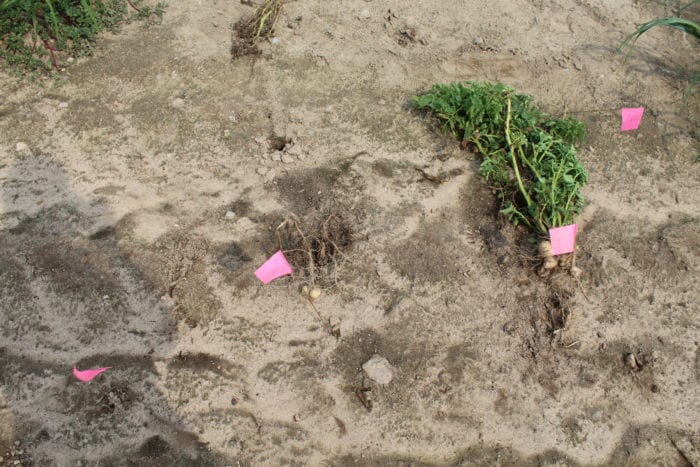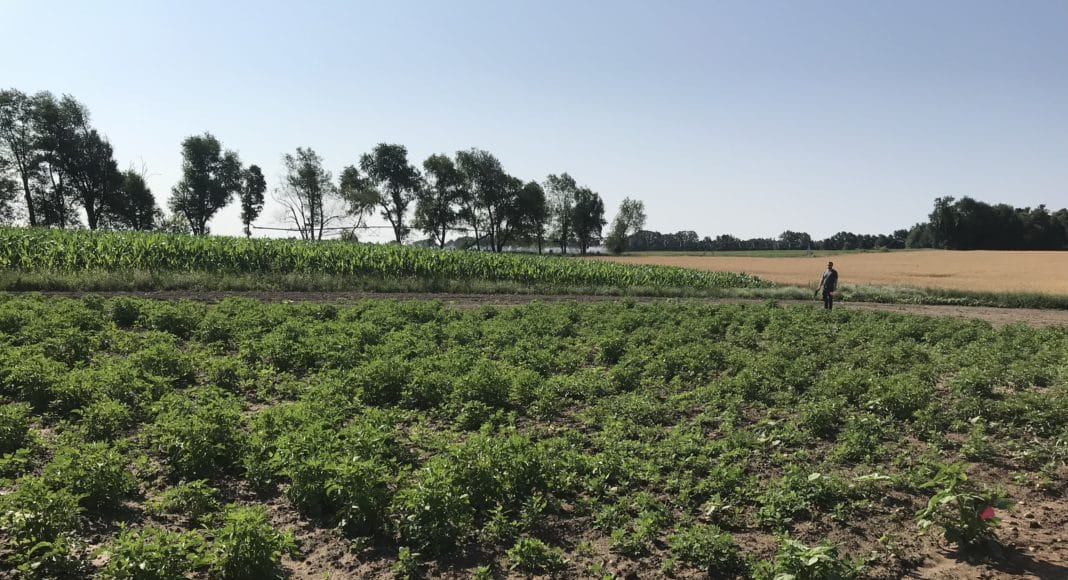Potatoes are a great crop to have in a field unless they pop up in years when they aren’t supposed to be there, begging the question — how do you get rid of them?
Experts


Editor’s note: This interview has been edited for length and clarity.
Spud Smart (SS): What are volunteer potatoes?
Gavin Graham (GG): It’s really impossible to remove all the tubers during our harvest procedures, depending on your size profile, or what your crops looking like. Some estimates are that you can leave up to 10 per cent of those tubers in the field. So those tubers are going to stay in the field and could potentially sprout in the next season and become weeds or act as weeds in the year following rotation years, and even be direct competition for that next crop. Or else, act as an alternative host for some of the other pest or diseases that we’re dealing with in potato production. This can act as a as a bridge to spread these issues around and help them spread within the fields or within our landscape. So, it is important to try to look at control.
If you do leave those volunteers to grow for that full cycle or that full season, they can produce those daughter tubers, and then your cycle will just keep on repeating. So, it is important to try to manage those ones when you first see them and try to limit their spread and limit their potential to take to give you impacts later on down the road.
SS: Why can they be hard to get rid of?
GG: Volunteer potatoes are not an easy weed to control. They are can be pretty difficult, depending on what your crop rotation looks like and what your following crops are. One of the issues is that these volunteers have a pretty wide emergence pattern. They tend to emerge at various times over the season. And this is really controlled by how deep those tubers are within your soil profile.

As far as management goes, there’s no real single one management tactic or technique that’s going to work for everyone. You really need to integrate multiple strategies to try to get ahead of these weed species and prevention is really the cornerstone of any kind of volunteer potato management program.
Erin Burns (EB): They’re a beast within themselves with having that huge storage reserve compared to some of other weed species with much smaller seeds. And they just have the ability to grow quite quickly and be quite damaging to the crop that they’re competing with. And then specifically in corn, and in many other cropping systems, there are no herbicides available that will both completely control the volunteers. Ultimately, the goal is to reduce that number of daughter tubers that are produced.
SS: Can you remove them with agronomic practices?
GG: From a volunteer perspective, taking more potatoes out of the field the better you’re going to be. And to be able to do that, that’s where you need to have any practices to ensure a uniform, properly sized crop, so that you’re able to get the most out of the field as possible. So that comes down to your seed spacing, your seed management, making sure that you’ve got a healthy seed stock, putting the right fertility there for the size profile that you’re looking for, reducing these impacts.
When you get into the actual harvest of your potato crop, make sure that your harvester settings and speeds are set correctly. Try to make sure that you’re maximizing the amount of product that goes back into the bin for storage, avoiding spills in the field, making sure that your tubers have fully removed from the stems so they’re not getting caught on the vines and going through your harvester that way. And that’s where making a proper desiccant choice if required is important. Then the other option is an infield sprouting inhibitor, we’ve really gotten away from that. But it is something to consider if your markets will allow that.
EB: Here, especially in Michigan, we’ve relied on our cold weather to kill some of these volunteers, and that’s just not happening anymore. So, they may become more problematic in the future if you don’t have that problem yet. So, studies at MSU (Michigan State University) have shown that most potato cultivars that we grow here in Michigan, break down after about a day of exposure to either 27 F or just -2.8 C. That’s about for a day, give or take a few hours.
SS: How do you eliminate them in a cereals field? Corn field?
GG: Roundup was the best treatment for visual control and daughter tuber yield. I think Roundup is the strongest option that we had in the trial. Callisto had some regrowth, but there was some good control of daughter tubers. So, for corn production, or some of the other crops that Callisto has a label for, I think this is a good option. MCPA amine was not really effective. Moving over to Pixxaro and Trophy did improve visual suppression, but they didn’t really improve the final tuber yields.

But the strongest ones as far as the cereal perspective, Infinity, Refine and Refine + MCPA were the best as far as suppression goes, but a little bit more reduction in tuber yields. But honestly, any of the grain herbicides were not as strong as the Roundup or Callisto was in the trial.
EB: So, some conclusions from the studies we conducted in corn is, overall, the addition of atrazine to these HPPD inhibitors — so, it’s group 27, across the board — improved volunteer potato control, as the size of volunteer potatoes increased our ultimate control decreased… And then ultimately, what you’re going to apply to control volunteers, you need to keep in mind what your future crop rotations are to make sure that you’re staying within those rotation restrictions.
For more information on volunteer potatoes watch our latest webinar about it.











